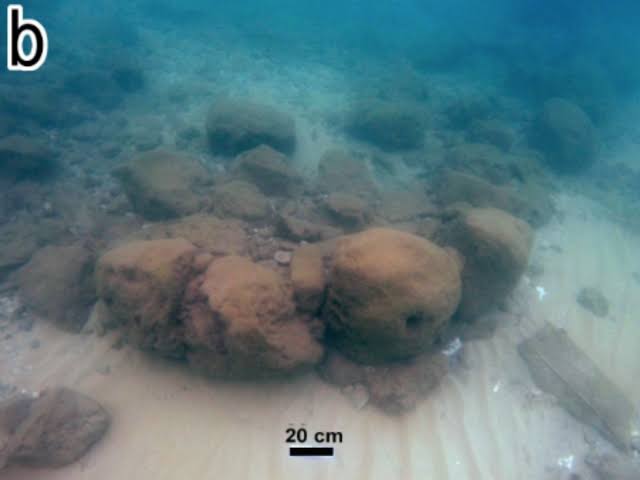Neolithic Seawall Discovered in Mediterranean Waters
Scientists have discovered an ancient seawall constructed by the Neolithic people to protect their village from a sea-level rise over 7,000 years ago.
This wall, which is 330 meters off the Carmel coast of Israel, had been constructed over a mile of riverbed stone, in order to build a barrier between the Mediterranean and Tel Heriz settlement.
Researchers led by Ehud Galili from the University of Haifa, Israel, in a study published in PLOS One claim that it represents the oldest known coastal defense system in the world with “a major effort spent by the neolithic villagers to create, organize and construct.”
At the time the settlement existed, sea levels were rising as global temperatures warmed following the end of the last ice age. The Mediterranean was rising by up to seven millimeters (0.27 inches) per year. Over a lifetime, this would have equaled around 20 centimeters.
“This rate of sea-level rise means the frequency of destructive storms damaging the village would have risen significantly,” Galili said in a statement.


“The environmental changes would have been noticeable to people, during the lifetime of a settlement across several centuries. Eventually, the accumulating yearly sea-level necessitated a human response involving the construction of a coastal protection wall similar to what we’re seeing around the world now.”
The Tel Hreiz settlement was first uncovered in the 1960s but the seawall was only identified in 2010 after a severe storm exposed it. Galili and his team then set about analyzing the remains of the submerged wall.
They found it was almost 10 feet tall and was built around the same time as the village. Over the course of decades, the seawall would have suffered from marine erosion, the researchers say.
After the sand layer was removed, waves and storms may have eventually dislodged boulders and stones.
Despite this “display of resilience” in the face of sea-level rise, the people of Tel Hreiz eventually left the village and, over time, both the seawall and village were lost to the sea.
“The seawall may have worked for a period,” the team wrote, “however, ultimately it proved futile and the village was eventually abandoned. The Tel Hreiz seawall represents the earliest example of a coastal defense of this type known to date.”
The team points to parallels with the sea-level rise mankind is facing today. While the rate at the moment is considerably lower than what these Neolithic people were facing, it is expected that many of the world’s coastal towns and cities will be impacted in the next century.
“Given the size of coastal populations and modern urban settlements, the magnitude of predicted future population displacement differs considerably to the impacts on people during the Neolithic,” the study said.
“However, many of the fundamental human questions and the decision-making relating to human resilience, coastal defense, local adaptation, technological innovation and decisions to ultimately abandon long-standing settlements remain ominously relevant.”
